Tokyo is a vibrant, bustling city that seamlessly blends tradition with modernity. With so much to do and see, it can be overwhelming for travelers to decide where to go. To help you make the most of your trip, here are 15 must-visit places in Tokyo that should be on your list! Whether you’re a history buff, a nature lover, or a shopaholic, Tokyo has something for everyone.
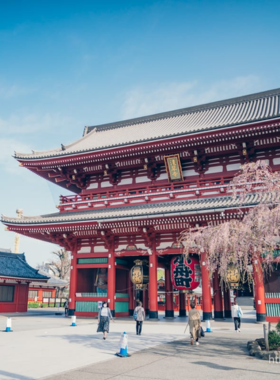
Explore the Historical Charm of Asakusa and Senso-ji Temple
Address: Taito
| Type | Free, Churches/Religious Sites, Sightseeing |
| Time to Spend | 1 to 2 hour |
History and Significance: Asakusa is home to Senso-ji Temple, Tokyo’s oldest and most significant temple, founded in 628 AD. The temple has long been a center of spirituality, attracting both locals and tourists. It holds historical importance as a symbol of Tokyo’s cultural heritage and religious practices.
What to Expect: Visitors can expect a mix of history and tradition, with the iconic Kaminarimon gate, bustling Nakamise Street, and the grand Senso-ji Temple. The area is rich in culture and spirituality, offering a peaceful yet lively atmosphere.
Visitor Information: Senso-ji Temple is open daily, with no entrance fee for the temple itself. It’s easily accessible via Asakusa Station. Be sure to explore the temple grounds and nearby shops for souvenirs and traditional snacks.
Asakusa is the perfect starting point for exploring Tokyo’s rich history. Home to the ancient Senso-ji Temple, it provides a glimpse into the spiritual and cultural heart of the city. Founded in 628 AD, the temple is Tokyo’s oldest and most famous. Visitors can experience the temple’s serene atmosphere, walk along Nakamise Street filled with traditional shops and food stalls, and enjoy the vibrant local culture that has been preserved for centuries.
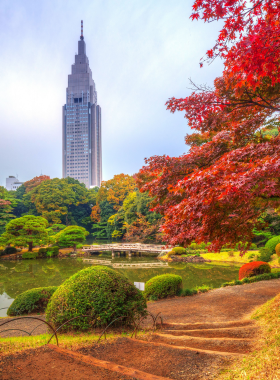
Stroll Through the Beautiful Shinjuku Gyoen National Garden
Address: 11 Naitomachi
| Type | Parks and Gardens |
| Time to Spend | Less than 1 hour |
History and Significance: Shinjuku Gyoen National Garden was originally a private residence of a feudal lord and later became a public park in 1949. It blends Japanese, English, and French garden designs, offering an oasis of tranquility in the city.
What to Expect: Expect a peaceful escape with diverse landscapes, including Japanese gardens, ponds, and expansive lawns. Each season offers new beauty, from cherry blossoms in spring to colorful autumn foliage, perfect for photography and relaxation.
Visitor Information: The garden is open daily, with a modest entrance fee. It’s located a short walk from Shinjuku Station, making it easily accessible for visitors. The park is a great place for picnics, leisurely strolls, and seasonal flower viewing.
Shinjuku Gyoen National Garden is an ideal escape from the busy streets of Tokyo, offering a peaceful retreat in the middle of the city. This expansive garden blends Japanese, English, and French styles, with winding paths, ponds, and beautiful landscapes. The garden’s charm changes with the seasons, from cherry blossoms in spring to vibrant autumn colors. It’s the perfect spot for leisurely strolls, a picnic, or simply soaking in the tranquility of nature in the heart of Tokyo.

Visit the Modern Wonders of Odaiba
Address: お台場, Japan
| Type | Sightseeing, Seaside park, Shopping malls |
| Time to Spend | Half Day |
History and Significance: Odaiba is a man-made island created in the 1850s for defensive purposes and later transformed into a futuristic entertainment hub. Today, it represents Tokyo’s cutting-edge architecture and tech culture.
What to Expect: Expect an immersive experience with futuristic buildings, shopping malls, and attractions like the teamLab Borderless art museum and the Unicorn Gundam Statue. Odaiba offers a perfect blend of modernity, entertainment, and breathtaking views of Tokyo Bay.
Visitor Information: Odaiba is easily accessible by train from central Tokyo, with multiple attractions in the area. Admission fees vary depending on the attractions, so be sure to plan accordingly. The island is perfect for families, tech lovers, and those seeking modern entertainment.
Odaiba is a futuristic island in Tokyo Bay, known for its cutting-edge architecture and attractions. It’s home to shopping malls, entertainment centers, and some of the most iconic sights in Tokyo, including the giant Unicorn Gundam Statue. You can also visit teamLab Borderless, an immersive digital art museum that offers a completely interactive experience. Whether you’re exploring the futuristic buildings, shopping at DiverCity Tokyo Plaza, or enjoying the seaside park, Odaiba offers a mix of modern entertainment and cultural experiences.
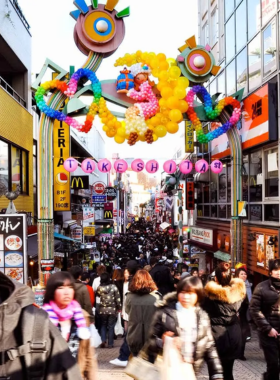
Get Lost in the Vibrant Streets of Harajuku
Address: Tokyo, Japan
| Type | Neighborhood area |
| Time to Spend | 2 hours to Half Day |
History and Significance: Harajuku became famous in the 1980s for its youth culture and eccentric fashion. Over time, it has evolved into a global fashion hub, influencing trends worldwide.
What to Expect: Expect vibrant street fashion, quirky boutiques, and trendy cafes. Takeshita Street is especially known for its youthful energy, where you’ll find everything from unique clothing to delicious crepes.
Visitor Information: Harajuku is easily accessible via Harajuku Station. It’s a bustling area, especially on weekends, so be prepared for crowds. It’s best to visit early for a more relaxed shopping experience or to enjoy street food.
Harajuku is Tokyo’s fashion capital, famous for its bold and eccentric street styles. This neighborhood is packed with trendy boutiques, vibrant fashion stores, and unique cafes. Takeshita Street, in particular, is known for its youthful energy and colorful atmosphere. Here, visitors can enjoy delicious treats like crepes, shop for quirky clothing, or simply observe the colorful fashion culture that draws visitors from all over the world. Harajuku is a must-visit for those looking to experience the avant-garde side of Tokyo’s culture.
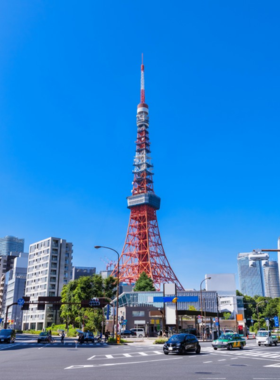
Admire the Panoramic Views from Tokyo Tower
Address: 4 Chome-2-8 Shibakoen, Minato City, Tokyo 105-0011, Japan
| Type | Sightseeing |
| Time to Spend | 1 to 2 hours |
History and Significance: Completed in 1958, Tokyo Tower was modeled after the Eiffel Tower and symbolizes Japan’s post-war modernization. It was once the tallest structure in Japan and remains an iconic landmark.
What to Expect: Expect breathtaking panoramic views of Tokyo from the observation decks, offering sweeping views of the city and beyond. On clear days, visitors can even see Mount Fuji in the distance, making it a great spot for sightseeing.
Visitor Information: Tokyo Tower is open daily, with an entrance fee for access to the observation decks. It’s located in the Minato district and can be easily reached by train from central Tokyo. The tower lights up beautifully at night, making it a great evening visit.
Tokyo Tower, one of the city’s most iconic landmarks, offers breathtaking panoramic views from its observation decks. Standing 333 meters tall, it provides a 360-degree view of Tokyo’s sprawling cityscape. On clear days, visitors can even catch sight of Mt. Fuji in the distance. Whether you’re visiting during the day to see the city’s layout or at night to witness the sparkling lights of Tokyo, the view from Tokyo Tower is an unforgettable experience that showcases the vastness of this vibrant city.
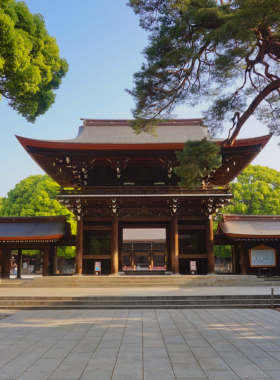
Marvel at the Serenity of Meiji Shrine
Address: 1-1 Yoyogikamizonocho
| Type | Free, Churches/Religious Sites, Monuments and Memorials, Sightseeing |
| Time to Spend | 1 to 2 hours |
History and Significance: Meiji Shrine was established in 1920 to honor Emperor Meiji and Empress Shoken, who played crucial roles in Japan’s modernization during the Meiji Era.
What to Expect: Expect a serene environment surrounded by nature, with traditional Shinto architecture and peaceful paths. Visitors can participate in Shinto rituals, such as making wishes or drawing omikuji (fortune slips).
Visitor Information: Meiji Shrine is open every day, with no entrance fee. It’s a short walk from Harajuku Station, and you can also enjoy the nearby Yoyogi Park. Visit early in the morning to experience its calm and spiritual atmosphere.
Nestled in a lush forested area, Meiji Shrine offers a peaceful retreat from Tokyo’s urban chaos. Dedicated to Emperor Meiji and Empress Shoken, this shrine is a place of worship and reflection. Visitors can walk through the grand torii gate, follow the tree-lined paths, and experience traditional Shinto rituals. The serene atmosphere, combined with the beauty of the surrounding forest, makes Meiji Shrine a perfect spot for a calm escape, offering both spiritual peace and a deeper connection with Japanese traditions.

Shop ‘Til You Drop in Ginza
Address: Chuo-ku
| Type | Free, Neighborhood/Area, Shopping |
| Time to Spend | 1 to 2 hours |
History and Significance: Ginza has long been Tokyo’s premier shopping district, dating back to the Edo period. It’s known for its luxurious shops, upscale dining, and cultural venues.
What to Expect: Expect high-end shopping, designer boutiques, and elegant department stores like Mitsukoshi. The district also features chic cafes, theaters, and art galleries, making it a cultural and retail destination.
Visitor Information: Ginza is accessible via Ginza Station or by walking from Tokyo Station. It’s open daily, with most stores operating from late morning to evening. The area is particularly beautiful at night, with its neon lights and stylish ambiance.
Ginza is Tokyo’s premier shopping district, known for its luxury boutiques, high-end department stores, and world-class dining. Whether you’re looking for the latest fashion trends, exclusive designer items, or unique local goods, Ginza offers a wide variety of shopping options. The district also boasts elegant cafes and restaurants, perfect for enjoying fine dining experiences. With its sophisticated atmosphere and modern architecture, Ginza is the place to indulge in retail therapy, enjoy gourmet meals, or simply browse the stylish streets.
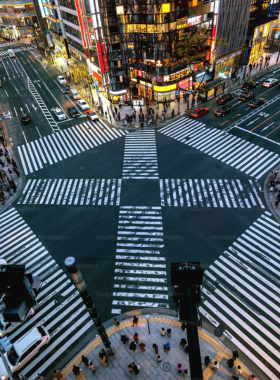
Experience the Frenzied Shibuya Crossing
Address: 2 Chome-5-9 Dogenzaka
| Type | Free, Sightseeing |
| Time to Spend | Less than 1 hour |
History and Significance: Shibuya Crossing has become a symbol of Tokyo’s urban life, representing the fast-paced, vibrant energy of the city. The crossing is part of Shibuya Station, one of the busiest transportation hubs in Tokyo.
What to Expect: Expect a bustling, chaotic yet mesmerizing experience as hundreds of people cross the intersection from all directions. Surrounded by towering buildings and neon advertisements, it’s a quintessential Tokyo experience.
Visitor Information: Shibuya Crossing is located outside Shibuya Station and is open 24/7. The best view of the crossing is from nearby cafés or department stores like Tsutaya. It’s most iconic during rush hours, especially in the evening.
Shibuya Crossing is one of the busiest intersections in the world and an iconic symbol of Tokyo’s energy. With hundreds of people crossing from all directions at once, it’s an overwhelming but fascinating sight. The surrounding area is filled with flashing neon billboards, trendy stores, and countless eateries, making it a vibrant hub of activity. Whether you’re crossing the street yourself or simply watching the spectacle from a nearby café, Shibuya Crossing captures the bustling spirit of Tokyo and its fast-paced urban lifestyle.

Relax and Reflect at Ueno Park
Address: Uenokoen
| Type | Free, Parks and Gardens |
| Time to Spend | 1 to 2 hours |
History and Significance: Ueno Park has been a cultural hub in Tokyo since the Edo period, originally part of Kaneiji Temple grounds. It is now home to museums, a zoo, and seasonal gardens.
What to Expect: Expect peaceful lakes, vast lawns, cherry blossoms in spring, and cultural institutions like the Tokyo National Museum and Ueno Zoo. It’s a relaxing spot to escape from the busy city.
Visitor Information: Ueno Park is open daily with free entry, although some attractions like museums and the zoo have entrance fees. It’s easily accessible from Ueno Station, making it perfect for a half-day visit.
Ueno Park is one of Tokyo’s oldest and most beloved public parks, offering a peaceful escape amidst the city’s hustle. With over 1,000 cherry trees, the park is especially popular in spring when the sakura (cherry blossoms) are in full bloom. It’s also home to Ueno Zoo, museums like the Tokyo National Museum, and tranquil ponds where you can relax and watch the world go by. Whether you’re enjoying the seasonal beauty, exploring cultural institutions, or simply taking a stroll, Ueno Park is a delightful place to unwind.
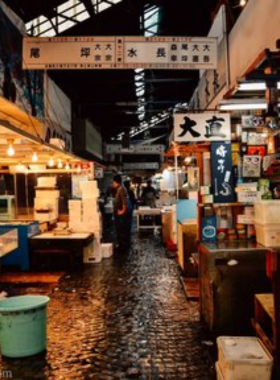
Savor Sushi at Tsukiji Outer Market
Address: 5-2 Tsukiji Chuo-ku
| Type | Free, Neighborhood/Area, Tours, Sightseeing |
| Time to Spend | 1 to 2 hours |
History and Significance: Tsukiji Market was once the largest fish market in the world, with a history dating back to the Edo period. The outer market continues to thrive after the inner wholesale market moved to Toyosu.
What to Expect: Expect fresh seafood, traditional sushi, and street food. Many vendors serve sushi right from the counter, offering a true taste of Tokyo’s famous seafood.
Visitor Information: Tsukiji Outer Market is open daily, with many stalls opening early in the morning. It’s easily accessible from Tsukiji Station, and visiting in the morning is recommended to catch the freshest fish and avoid crowds.
For a true taste of Tokyo’s culinary culture, a visit to Tsukiji Outer Market is a must. While the inner wholesale market has relocated, the outer market remains a vibrant hub for fresh seafood, street food, and local delicacies. Start your day with a sushi breakfast at one of the many sushi bars, where you can enjoy the freshest fish. Explore the market stalls offering everything from pickles to Japanese sweets, and experience the lively atmosphere that has made Tsukiji a popular destination for food lovers.

Discover the Cutting-Edge Fashion in Shibuya
Address: Tokyo, Japan
| Type | Neighborhood area |
| Time to Spend | 1 to 2 hours |
History and Significance: Shibuya has long been a trendsetting district, famous for its youthful energy and innovative fashion culture. It has shaped Tokyo’s street fashion scene for decades.
What to Expect: Expect a bustling shopping area full of cutting-edge fashion stores, including large department stores and independent boutiques. Shibuya’s fashion is constantly evolving, offering the latest trends in streetwear and accessories.
Visitor Information: Shibuya is accessible via Shibuya Station, with stores open from mid-morning to evening. The area gets crowded, especially on weekends, so it’s best to visit during weekdays or early in the day for a relaxed shopping experience.
Shibuya is one of Tokyo’s most energetic and fashionable districts. Known for its eclectic blend of international brands and local fashion trends, it attracts both locals and tourists looking for the latest in street style. From large department stores like Shibuya 109 to independent boutiques and vintage shops, there’s something for everyone. Shibuya’s fashion scene is constantly evolving, with new trends emerging every season. It’s the perfect place to shop for unique pieces or simply explore the cutting-edge style that defines the city’s fashion culture.

Tour the Beautiful Imperial Palace East Gardens
Address: Chiyoda-ku
| Type | Free, Parks and Gardens, Castles/Palaces, Monuments and Memorials |
| Time to Spend | 1 to 2 hours |
History and Significance: The Imperial Palace East Gardens were part of the Edo Castle grounds, serving as the residence of Japan’s royal family until the Meiji Era. Today, they are a public park and historical site.
What to Expect: Expect a peaceful stroll through meticulously landscaped gardens, historical ruins of the Edo Castle, and tranquil ponds. The gardens offer a rare look at Japan’s royal history.
Visitor Information: The gardens are open daily (except Mondays and Fridays) with no entry fee. They are easily accessible from Tokyo Station or Nijubashi-mae Station. Guided tours are available for those interested in learning about the history of the gardens.
The Imperial Palace East Gardens are a tranquil oasis in the heart of Tokyo, offering a serene escape from the city’s bustling streets. Part of the Imperial Palace grounds, the East Gardens are open to the public and feature beautifully manicured landscapes, traditional Japanese gardens, and historical ruins. Visitors can stroll through lush greenery, visit the remains of the Edo Castle, or simply relax by the ponds. The gardens offer a glimpse into Japan’s imperial past while providing a peaceful space for reflection and relaxation.

Venture into the Nightlife of Roppongi
Address: Minato City, Tokyo 106-0032
| Type | Entertainment & Nightlife |
| Time to Spend | 1 to 2 hours |
History and Significance: Roppongi emerged in the post-war era as a hotspot for nightlife and entertainment, catering to both Japanese locals and international visitors. It remains a thriving district for nightlife today.
What to Expect: Expect vibrant nightlife, with countless bars, nightclubs, and restaurants. Roppongi is famous for its international flair, with venues offering a mix of Western and Japanese entertainment.
Visitor Information: Roppongi is accessible from Roppongi Station. The area is busy at night, with bars and clubs open until late. If you’re interested in Tokyo’s nightlife scene, Roppongi is a must-visit, though be mindful of your surroundings in late hours.
Roppongi is Tokyo’s premier nightlife district, offering a wide range of bars, nightclubs, and entertainment venues. Known for its cosmopolitan atmosphere, Roppongi attracts both locals and international visitors looking for a vibrant night out. Whether you’re looking to dance at a trendy nightclub, enjoy cocktails at a rooftop bar with panoramic views, or explore sophisticated lounges, Roppongi has something for everyone. The district also offers a variety of international restaurants, making it a great place to sample diverse cuisines while enjoying Tokyo’s nightlife.
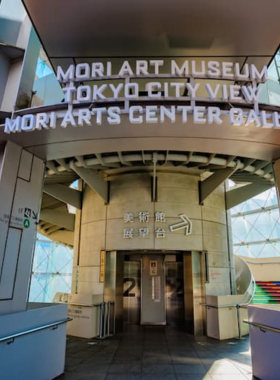
Admire the Modern Art at Roppongi Hills Mori Art Museum
Address: Japan, 〒106-6150 Tokyo, Minato City
| Type | Museum |
| Time to Spend | 2 hours to Half Day |
History and Significance: The Mori Art Museum is part of the Roppongi Hills complex, a symbol of Tokyo’s modern architecture and cultural growth. The museum focuses on contemporary art from both Japanese and international artists.
What to Expect: Expect a world-class art experience with rotating exhibitions, installations, and digital art. The museum’s diverse collection allows visitors to explore the latest trends in contemporary art.
Visitor Information: The museum is open daily with an entrance fee. It’s located in the Roppongi Hills Mori Tower, accessible from Roppongi Station. Don’t miss the observation deck for stunning views of Tokyo after your museum visit.
The Mori Art Museum, located in Roppongi Hills, is a must-visit for art enthusiasts. This contemporary art museum showcases the works of both Japanese and international artists, offering a unique insight into the world of modern art. With rotating exhibitions and installations, the museum provides visitors with a constantly evolving cultural experience. After exploring the exhibits, head to the observation deck for stunning views of Tokyo, including the famous Tokyo Tower. The museum is a perfect combination of art, culture, and breathtaking cityscapes.
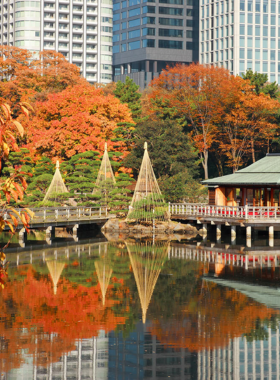
Indulge in Traditional Tea at Hamarikyu Gardens
Address: 1-1 Hamarikyuteien, Chuo City, Tokyo 104-0046, Japan
| Type | Parks & Gardens |
| Time to Spend | Half Day |
History and Significance: Hamarikyu Gardens is a historic Edo-period garden that once belonged to the Tokugawa shogunate. It’s a perfect example of traditional Japanese garden design.
What to Expect: Expect a tranquil atmosphere with traditional tea ceremonies offered at the teahouse overlooking a pond. The gardens provide a beautiful escape, with seasonal flowers and meticulously pruned trees.
Visitor Information: Hamarikyu Gardens is open daily, with an entrance fee. It’s located near Shiodome Station, making it easily accessible. The gardens are perfect for a relaxing day out and an authentic experience of Japan’s tea culture.
Hamarikyu Gardens, located by Tokyo Bay, is a serene spot to experience Japan’s traditional tea culture. The gardens are home to a beautiful teahouse where visitors can enjoy a cup of matcha tea while taking in the picturesque surroundings of the landscaped gardens and tranquil ponds. The gardens themselves are a stunning example of Japanese garden design, with meticulously pruned trees and seasonal flowers. It’s a perfect place to relax, reflect, and immerse yourself in the calm beauty of nature, all while enjoying a traditional tea ceremony.
